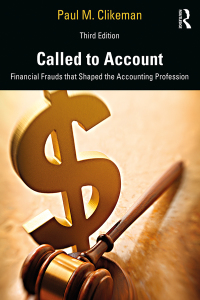
Forestry Economics The table below contains data that are required for some of the following questions. f and fare derived from a logistic growth function, p = 3, c = 1, .and i = 4.5%. 1 F/ 10 11 12 13 14 15 16 17 18 19 20 21 22 23 24 tenQBHBEBB f 31.17 35.07 38.46 41.28 43.52 45.25 46.56 47.52 48.23 48.74 49.10 49.37 49.55 49.68 49.78 49.84 t 4.11 3.66 3.11 2.52 1.97 1.50 1.12 0.82 0.60 0.43 0.31 0.22 0.16 0.11 0.08 0.06 fif 13.2% 10.4% 8.1% 6.1% 4.5% 3.3% 2.4% 1.7% 1.2% 0.9% 0.6% 0.4% 0.3% 0.2% 0.2% 0.1% flt 3.12 3.19 3.21 3.18 3.11 3.02 2.91 2.80 2.68 2.57 2.46 2.35 2.25 2.16 2.07 1.99 (p-c) 8.2 7.3 6.2 5.0 3.9 3.0 2.2 1.6 1.2 0.9 0.6 0.4 0.3 0.2 0.2 0.1 i(p-c)f 2.8 3.2 3.5 3.7 3.9 4.1 4.2 4.3 4.3 4.4 4.4 4.4 4.5 4.5 4.5 4.5 V. Irving Fisher derived a rule for the optimal age of harvesting for the case in which there would be no replanting of the trees. A. Derive the Fisher rule from the condition MBW = MCW. B. Applying the Fisher rule to the data in the table, what is the optimal age to harvest the trees? Explain why. C. What rate of interest would result in maximizing the amount of wood? Explain why. D. Calculate what the optimal harvesting age would be if each of the following occurred: 1. A trend in the stumpage price equal to -1.6% per year. 2. A decrease in the interest rate equal to 2.1%. E. How would a one-time downward shift in the stumpage price affect the optimal harvesting age if the present value of the forest land in an alternative use is A dollars? VI. Now suppose that the land will be used to grow a new crop of trees when the current crop is harvested, to grow still another crop after the new one is harvested, and so on forever. A. Explain why the Fisher rule would not be the correct way to determine the optimal harvesting age: B. Another incorrect rule is the maximum sustainable yield (MSY) rule. 1. What rotation age maximizes sustainable yield? 2. Why wouldn't it be the correct way to determine the optimal harvesting age? VII. Now suppose that in addition to growing wood, the forest produces other benefits such as flood control and recreation. Discuss how this would be expected to affect the optimal age for harvesting the trees in each of the following cases: 1. There will be no replanting of the trees. 2. A new crop of trees will be replanted after each harvest, forever. 2 Forestry Economics The table below contains data that are required for some of the following questions. f and fare derived from a logistic growth function, p = 3, c = 1, .and i = 4.5%. 1 F/ 10 11 12 13 14 15 16 17 18 19 20 21 22 23 24 tenQBHBEBB f 31.17 35.07 38.46 41.28 43.52 45.25 46.56 47.52 48.23 48.74 49.10 49.37 49.55 49.68 49.78 49.84 t 4.11 3.66 3.11 2.52 1.97 1.50 1.12 0.82 0.60 0.43 0.31 0.22 0.16 0.11 0.08 0.06 fif 13.2% 10.4% 8.1% 6.1% 4.5% 3.3% 2.4% 1.7% 1.2% 0.9% 0.6% 0.4% 0.3% 0.2% 0.2% 0.1% flt 3.12 3.19 3.21 3.18 3.11 3.02 2.91 2.80 2.68 2.57 2.46 2.35 2.25 2.16 2.07 1.99 (p-c) 8.2 7.3 6.2 5.0 3.9 3.0 2.2 1.6 1.2 0.9 0.6 0.4 0.3 0.2 0.2 0.1 i(p-c)f 2.8 3.2 3.5 3.7 3.9 4.1 4.2 4.3 4.3 4.4 4.4 4.4 4.5 4.5 4.5 4.5 V. Irving Fisher derived a rule for the optimal age of harvesting for the case in which there would be no replanting of the trees. A. Derive the Fisher rule from the condition MBW = MCW. B. Applying the Fisher rule to the data in the table, what is the optimal age to harvest the trees? Explain why. C. What rate of interest would result in maximizing the amount of wood? Explain why. D. Calculate what the optimal harvesting age would be if each of the following occurred: 1. A trend in the stumpage price equal to -1.6% per year. 2. A decrease in the interest rate equal to 2.1%. E. How would a one-time downward shift in the stumpage price affect the optimal harvesting age if the present value of the forest land in an alternative use is A dollars? VI. Now suppose that the land will be used to grow a new crop of trees when the current crop is harvested, to grow still another crop after the new one is harvested, and so on forever. A. Explain why the Fisher rule would not be the correct way to determine the optimal harvesting age: B. Another incorrect rule is the maximum sustainable yield (MSY) rule. 1. What rotation age maximizes sustainable yield? 2. Why wouldn't it be the correct way to determine the optimal harvesting age? VII. Now suppose that in addition to growing wood, the forest produces other benefits such as flood control and recreation. Discuss how this would be expected to affect the optimal age for harvesting the trees in each of the following cases: 1. There will be no replanting of the trees. 2. A new crop of trees will be replanted after each harvest, forever. 2







